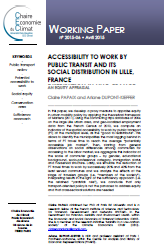
European carbon market: lessons on the impact of a market stability reserve using the Zephyr model
by Raphaël Trotignon, Pierre-André Jouvet, Boris Solier, Simon Quemin and Jérémy Elbeze
In January 2014, the European Commission proposed the introduction of a Market Stability Reserve (MSR) to improve the functioning of the European carbon emission trading scheme. This article is an attempt to enlighten the possible effects of such a reserve on the functioning of the EU ETS using the behavior-based simulation model Zephyr, specifically designed for representing imperfect inter-temporal compliance behavior in a simple framework. Our results suggest that the MSR can indeed raise the price in the short-medium term, reduce the number of allowances in circulation and foster earlier emission reductions. Nevertheless, it would do so at the expense of higher overall costs, because allowances are unlikely to be returned entirely to the market when needed, thus reinforcing the cap. The MSR also does not seem to have the desired dampening effect in case of external shocks. We conclude that although the MSR can help trigger early abatement and put Europe on a more ambitious abatement pathway over the long term, in the frame of our methodology, it seems unlikely that such a reserve make market participants and the public authority more able to deal with uncertainties in the future.
